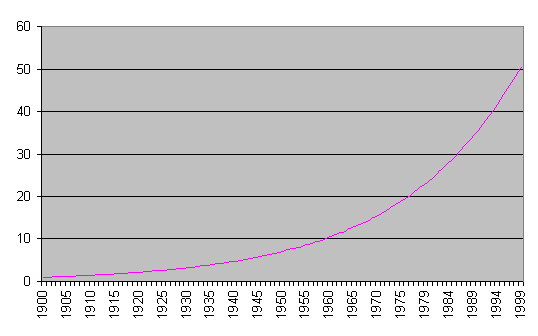
Economic
and Game Theory
Why Economic Growth Diminishes Any Benefit
of Patent Protection
by Michele Boldrin and David K. Levine
In our scientific work, we have argued that innovation involves an indivisibility rather than a fixed cost, and that it is the embodiment of ideas that is important, rather than their independent existence. This is different from the more traditional view in economics that ideas are independent entities that are produced with a fixed cost. What is the meaning of this abstract debate? What is the practical importance of our point of view?
A simple example shows how indivisibility and embodiment interact. Let's think about developing a new drug. Imagine that a team of twelve expert biomedical researchers working full-time for one year will be able to invent the new drug. Now the significance of the new drug is not simply that some abstract formula for the new drug exists. In fact much of the discovery is going to be embodied in the form of specific information that the team has generated during their year of research. In particular, for anyone but the team to produce the drug, or to build a production line for mass production, the team is going to have to explain to other people what to do. Of course if they have to explain to you or me it is going to take quite a while, since first we will have to get 12 different Ph.D's so we can understand what they are talking about. But for other research teams, the time to explain may be rather faster - perhaps what took a year to develop could be explained in a month.
To produce the drug in socially optimal quantities it might be desirable for there to be more than one well-informed team that knows how to produce the drug. This makes it possible to engage in parallel production: one team sets up a production line in the US, one in Europe, for example. There are two ways teams can become sufficiently well-informed to produce the new drug. One team can produce the idea, then spend a month explaining it to another team. Or two teams could simultaneously spend a year producing the idea in parallel. The advantage of the latter procedure is that while it is more costly (two years of team time, rather than one year two months), the idea is available one month earlier. For a cure for a deadly disease, the social value of a month may be quite high, so there are plausible cases where the social optimum will be to have several teams inventing in parallel: for example the social optimum might involve two, three, or even more teams. This is all a consequence of the fact that knowledge is embodied, and so must be transmitted.
Now the indivisibility comes in. If the social optimum involves more than one team inventing in parallel - the indivisibility does not bind. Because there is no fixed cost, just an indivisibility, this has an immediate economic consequence: the rents from the scarcity of knowledge about how to produce the drug are sufficient to cover the cost of the time of all the teams. There is no economic justification whatsoever for patent protection in this case.
This example is obviously quite general. What does it have to do with economic growth? Simply as the size of the economy expands, there are more beneficiaries and the beneficiaries are richer, so they are also willing to pay more for the products of intellectual enterprises. That means that as the economy increases in size, the value of earlier production increases. As we saw in the example, as the value of early production increases, parallel production of ideas becomes more desirable, the indivisibility stops binding and so the economic justification for patent protection goes away.